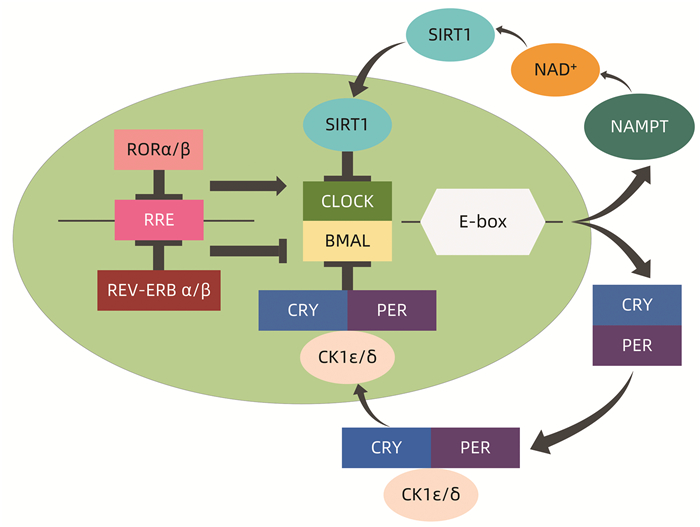| [1] |
National Workshop on Fatty Liver and Alcoholic Liver Disease, Chinese Society of Hepatology, Chinese Medical Association, Fatty Liver Expert Committee, Chinese Medical Doctor Association. Guidelines of prevention and treatment for nonalcoholic fatty liver disease: A 2018 update[J]. J Clin Hepatol, 2018, 34(5): 947-957. DOI: 10.3969/j.issn.1001-5256.2018.05.007.中华医学会肝病学分会脂肪肝和酒精性肝病学组, 中国医师协会脂肪性肝病专家委员会. 非酒精性脂肪性肝病防治指南(2018年更新版)[J]. 临床肝胆病杂志, 2018, 34(5): 947-957. DOI: 10.3969/j.issn.1001-5256.2018.05.007.
|
| [2] |
YOUNOSSI ZM, OTGONSUREN M, HENRY L, et al. Association of nonalcoholic fatty liver disease (NAFLD) with hepatocellular carcinoma (HCC) in the United States from 2004 to 2009[J]. Hepatology, 2015, 62(6): 1723-1730. DOI: 10.1002/hep.28123.
|
| [3] |
ANSTEE QM, REEVES HL, KOTSILITI E, et al. From NASH to HCC: Current concepts and future challenges[J]. Nat Rev Gastroenterol Hepatol, 2019, 16(7): 411-428. DOI: 10.1038/s41575-019-0145-7.
|
| [4] |
MOHAWK JA, GREEN CB, TAKAHASHI JS. Central and peripheral circadian clocks in mammals[J]. Annu Rev Neurosci, 2012, 35: 445-462. DOI: 10.1146/annurev-neuro-060909-153128.
|
| [5] |
ALTMAN BJ. Cancer clocks out for lunch: Disruption of circadian rhythm and metabolic oscillation in cancer[J]. Front Cell Dev Biol, 2016, 4: 62. DOI: 10.3389/fcell.2016.00062.
|
| [6] |
BLAKEMAN V, WILLIAMS JL, MENG QJ, et al. Circadian clocks and breast cancer[J]. Breast Cancer Res, 2016, 18(1): 89. DOI: 10.1186/s13058-016-0743-z.
|
| [7] |
LIU J, ZHOU B, YAN M, et al. CLOCK and BMAL1 regulate muscle insulin sensitivity via SIRT1 in male mice[J]. Endocrinology, 2016, 157(6): 2259-2269. DOI: 10.1210/en.2015-2027.
|
| [8] |
OLKKONEN J, KOURI VP, KUUSELA E, et al. DEC2 blocks the effect of the ARNTL2/NPAS2 dimer on the expression of PER3 and DBP[J]. J Circadian Rhythms, 2017, 15: 6. DOI: 10.5334/jcr.149.
|
| [9] |
OOSTERMAN JE, KALSBEEK A, LA FLEUR SE, et al. Impact of nutrients on circadian rhythmicity[J]. Am J Physiol Regul Integr Comp Physiol, 2015, 308(5): r337-r350. DOI: 10.1152/ajpregu.00322.2014.
|
| [10] |
RAY K. NAFLD-HCC: Target cholesterol[J]. Nat Rev Gastroenterol Hepatol, 2018, 15(7): 390. DOI: 10.1038/s41575-018-0029-2.
|
| [11] |
WU Z, MA H, WANG L, et al. Tumor suppressor ZHX2 inhibits NAFLD-HCC progression via blocking LPL-mediated lipid uptake[J]. Cell Death Differ, 2020, 27(5): 1693-1708. DOI: 10.1038/s41418-019-0453-z.
|
| [12] |
HORIE Y, SUZUKI A, KATAOKA E, et al. Hepatocyte-specific Pten deficiency results in steatohepatitis and hepatocellular carcinomas[J]. J Clin Invest, 2004, 113(12): 1774-1783. DOI: 10.1172/JCI20513.
|
| [13] |
ADAMOVICH Y, ROUSSO-NOORI L, ZWIGHAFT Z, et al. Circadian clocks and feeding time regulate the oscillations and levels of hepatic triglycerides[J]. Cell Metab, 2014, 19(2): 319-330. DOI: 10.1016/j.cmet.2013.12.016.
|
| [14] |
PÉREZ-MENDOZA M, RIVERA-ZAVALA JB, DÍAZ-MUÑOZ M. Daytime restricted feeding modifies the daily variations of liver gluconeogenesis: Adaptations in biochemical and endocrine regulators[J]. Chronobiol Int, 2014, 31(7): 815-828. DOI: 10.3109/07420528.2014.908898.
|
| [15] |
MEYER-KOVAC J, KOLBE I, EHRHARDT L, et al. Hepatic gene therapy rescues high-fat diet responses in circadian Clock mutant mice[J]. Mol Metab, 2017, 6(6): 512-523. DOI: 10.1016/j.molmet.2017.03.008.
|
| [16] |
SCHÄBLER S, AMATOBI KM, HORN M, et al. Loss of function in the Drosophila clock gene period results in altered intermediary lipid metabolism and increased susceptibility to starvation[J]. Cell Mol Life Sci, 2020, 77(23): 4939-4956. DOI: 10.1007/s00018-019-03441-6.
|
| [17] |
PASCHOS GK, IBRAHIM S, SONG WL, et al. Obesity in mice with adipocyte-specific deletion of clock component Arntl[J]. Nat Med, 2012, 18(12): 1768-1777. DOI: 10.1038/nm.2979.
|
| [18] |
ZHANG Y, FANG B, DAMLE M, et al. HNF6 and Rev-erbα integrate hepatic lipid metabolism by overlapping and distinct transcriptional mechanisms[J]. Genes Dev, 2016, 30(14): 1636-1644. DOI: 10.1101/gad.281972.116.
|
| [19] |
SOLT LA, WANG Y, BANERJEE S, et al. Regulation of circadian behaviour and metabolism by synthetic REV-ERB agonists[J]. Nature, 2012, 485(7396): 62-68. DOI: 10.1038/nature11030.
|
| [20] |
FENG D, LIU T, SUN Z, et al. A circadian rhythm orchestrated by histone deacetylase 3 controls hepatic lipid metabolism[J]. Science, 2011, 331(6022): 1315-1319. DOI: 10.1126/science.1198125.
|
| [21] |
FATHI DIZAJI B. The investigations of genetic determinants of the metabolic syndrome[J]. Diabetes Metab Syndr, 2018, 12(5): 783-789. DOI: 10.1016/j.dsx.2018.04.009.
|
| [22] |
MONNIER C, AUCLAIR M, LE CAM G, et al. The nuclear retinoid-related orphan receptor RORα controls circadian thermogenic programming in white fat depots[J]. Physiol Rep, 2018, 6(8): e13678. DOI: 10.14814/phy2.13678.
|
| [23] |
HAN YH, KIM HJ, NA H, et al. RORα induces KLF4-mediated M2 polarization in the liver macrophages that protect against nonalcoholic steatohepatitis[J]. Cell Rep, 2017, 20(1): 124-135. DOI: 10.1016/j.celrep.2017.06.017.
|
| [24] |
GRIMALDI B, BELLET MM, KATADA S, et al. PER2 controls lipid metabolism by direct regulation of PPARγ[J]. Cell Metab, 2010, 12(5): 509-520. DOI: 10.1016/j.cmet.2010.10.005.
|
| [25] |
AGGARWAL A, COSTA MJ, RIVERO-GUTIÉRREZ B, et al. The circadian clock regulates adipogenesis by a Per3 crosstalk pathway to Klf15[J]. Cell Rep, 2017, 21(9): 2367-2375. DOI: 10.1016/j.celrep.2017.11.004.
|
| [26] |
BARCLAY JL, SHOSTAK A, LELIAVSKI A, et al. High-fat diet-induced hyperinsulinemia and tissue-specific insulin resistance in Cry-deficient mice[J]. Am J Physiol Endocrinol Metab, 2013, 304(10): e1053-e1063. DOI: 10.1152/ajpendo.00512.2012.
|
| [27] |
ARBLE DM, BASS J, LAPOSKY AD, et al. Circadian timing of food intake contributes to weight gain[J]. Obesity (Silver Spring), 2009, 17(11): 2100-2102. DOI: 10.1038/oby.2009.264.
|
| [28] |
SALGADO-DELGADO R, ANGELES-CASTELLANOS M, SADERI N, et al. Food intake during the normal activity phase prevents obesity and circadian desynchrony in a rat model of night work[J]. Endocrinology, 2010, 151(3): 1019-1029. DOI: 10.1210/en.2009-0864.
|
| [29] |
CHAIX A, LIN T, LE HD, et al. Time-restricted feeding prevents obesity and metabolic syndrome in mice lacking a circadian clock[J]. Cell Metab, 2019, 29(2): 303-319. e4. DOI: 10.1016/j.cmet.2018.08.004.
|
| [30] |
TAHIRA K, UENO T, FUKUDA N, et al. Obesity alters the expression profile of clock genes in peripheral blood mononuclear cells[J]. Arch Med Sci, 2011, 7(6): 933-940. DOI: 10.5114/aoms.2011.26603.
|
| [31] |
KALSBEEK A, YI CX, LA FLEUR SE, et al. The hypothalamic clock and its control of glucose homeostasis[J]. Trends Endocrinol Metab, 2010, 21(7): 402-410. DOI: 10.1016/j.tem.2010.02.005.
|
| [32] |
STENVERS DJ, SCHEER F, SCHRAUWEN P, et al. Circadian clocks and insulin resistance[J]. Nat Rev Endocrinol, 2019, 15(2): 75-89. DOI: 10.1038/s41574-018-0122-1.
|
| [33] |
LEE J, KIM MS, LI R, et al. Loss of Bmal1 leads to uncoupling and impaired glucose-stimulated insulin secretion in β-cells[J]. Islets, 2011, 3(6): 381-388. DOI: 10.4161/isl.3.6.18157.
|
| [34] |
MARCHEVA B, RAMSEY KM, BUHR ED, et al. Disruption of the clock components CLOCK and BMAL1 leads to hypoinsulinaemia and diabetes[J]. Nature, 2010, 466(7306): 627-631. DOI: 10.1038/nature09253.
|
| [35] |
DYAR KA, CICILIOT S, WRIGHT LE, et al. Muscle insulin sensitivity and glucose metabolism are controlled by the intrinsic muscle clock[J]. Mol Metab, 2014, 3(1): 29-41. DOI: 10.1016/j.molmet.2013.10.005.
|
| [36] |
PAN X, BRADFIELD CA, HUSSAIN MM. Global and hepatocyte-specific ablation of Bmal1 induces hyperlipidaemia and enhances atherosclerosis[J]. Nat Commun, 2016, 7: 13011. DOI: 10.1038/ncomms13011.
|
| [37] |
GUILLAUMOND F, GRÉCHEZ-CASSIAU A, SUBRAMANIAM M, et al. Kruppel-like factor KLF10 is a link between the circadian clock and metabolism in liver[J]. Mol Cell Biol, 2010, 30(12): 3059-3070. DOI: 10.1128/MCB.01141-09.
|
| [38] |
THAISS CA, ZEEVI D, LEVY M, et al. Transkingdom control of microbiota diurnal oscillations promotes metabolic homeostasis[J]. Cell, 2014, 159(3): 514-529. DOI: 10.1016/j.cell.2014.09.048.
|
| [39] |
ZARRINPAR A, CHAIX A, YOOSEPH S, et al. Diet and feeding pattern affect the diurnal dynamics of the gut microbiome[J]. Cell Metab, 2014, 20(6): 1006-1017. DOI: 10.1016/j.cmet.2014.11.008.
|
| [40] |
LEONE V, GIBBONS SM, MARTINEZ K, et al. Effects of diurnal variation of gut microbes and high-fat feeding on host circadian clock function and metabolism[J]. Cell Host Microbe, 2015, 17(5): 681-689. DOI: 10.1016/j.chom.2015.03.006.
|
| [41] |
YIN J, LI Y, HAN H, et al. Administration of exogenous melatonin improves the diurnal rhythms of the gut microbiota in mice fed a high-fat diet[J]. mSystems, 2020, 5(3): e00002-20. DOI: 10.1128/mSystems.00002-20.
|
| [42] |
KUANG Z, WANG Y, LI Y, et al. The intestinal microbiota programs diurnal rhythms in host metabolism through histone deacetylase 3[J]. Science, 2019, 365(6460): 1428-1434. DOI: 10.1126/science.aaw3134.
|
| [43] |
STEVENSON TJ. Epigenetic regulation of biological rhythms: An evolutionary ancient molecular timer[J]. Trends Genet, 2018, 34(2): 90-100. DOI: 10.1016/j.tig.2017.11.003.
|
| [44] |
YUAN P, LI J, ZHOU F, et al. NPAS2 promotes cell survival of hepatocellular carcinoma by transactivating CDC25A[J]. Cell Death Dis, 2017, 8(3): e2704. DOI: 10.1038/cddis.2017.131.
|
| [45] |
KETTNER NM, VOICU H, FINEGOLD MJ, et al. Circadian homeostasis of liver metabolism suppresses hepatocarcinogenesis[J]. Cancer Cell, 2016, 30(6): 909-924. DOI: 10.1016/j.ccell.2016.10.007.
|
| [46] |
WU Y, TAO B, ZHANG T, et al. Pan-cancer analysis reveals disrupted circadian clock associates with T cell exhaustion[J]. Front Immunol, 2019, 10: 2451. DOI: 10.3389/fimmu.2019.02451.
|



 PDF下载 ( 2143 KB)
PDF下载 ( 2143 KB)


 下载:
下载:


